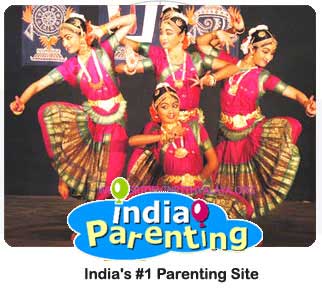 The Navratri festival is celebrated by Hindus all over the world and Goddess Durga is worshipped all nine days in different avatars. Read on to know about the nine colours for Navratri 2016 and their significance.
The Navratri festival is celebrated by Hindus all over the world and Goddess Durga is worshipped all nine days in different avatars. Read on to know about the nine colours for Navratri 2016 and their significance.Navratri festival is approaching and people are preparing to welcome Goddess Durga and celebrate the nine days dedicated to Goddesses Durga, Laxmi and Saraswati. Just like any other festival, it is important to know the significance of everything you do. People believe that Goddesses come down to earth and live in the houses of their devotees. This is the reason why people not just get ready for the festival and celebration themselves, they clean and decorate their houses for it.
Women and children get more excited and have more to prepare as they plan beforehand what they would like to wear on different days of
Navratri. It is the trend of wearing specific colour on each day of Navratri. Regardless of whether women are at work or out to play Dandiya or
Garba, they like to follow the trend and wear the specific colour for the day. So, if you are also thinking the same way, here is the list of
nine colours you should wear on specific days.
Navratri Day 1 – Pratipada on October 02 – Orange
Shailputri Maa is the first among the Goddesses who is worshipped on day 1 and this is the day when Ghatasthapan is done, which is installation of earthen pot.
Navratri Day 2 – Dwitiya on October 03 – White
The second Goddess who is worshipped on the second day is Brahmacharini. It is believed that she enlightens forms with power, divine and spiritual grace.
Navratri Day 3 – Tritiya on October 04 – Red
Chandraghanta is the third Goddess worshipped on the third day symbolizing peace, serenity, beauty and bravery in her devotees’ life.
Navratri Day 4 – Chaturthi on October 05 –Royal Blue>
Kushmanda is the Goddess worshipped on the fourth day and she is considered as the creator of the universe. Bhouma chaturthi is followed on this day.
Navratri Day 5 – Panchmi on October 06 – Yellow
Skandamata, the face of Maa Durga, who is known for demolishing demons, is worshipped on Panchmi.
Navratri Day 6 – Sashti on October 07 – Green
Katyayani, an avatar of Goddess Durga, is worshipped on Sashti, the sixth day of Navratri. People call it Maha Shashti.
Navratri Day 7 – Saptmi on October 08 – Grey
Kaalratri, the seventh form of
Goddess Durga, is believed to protect all her devotees from trouble and evil and bestow freedom and happiness on them. Maha Saptmi is the beginning of Utsav Pooja and Maa Kaalratri is worshipped on this day.
Navratri Day 8 – Ashtmi on October 09 – Purple
Mahagauri is worshipped on eighth day and is believed to forgive devotees’ sins and help them get purified. Saraswati maha Pooja is done whole heartedly on this day.
Navratri Day 9 – Navami on October 10 – Peacock green
Siddhidatri is the form of Maa Durga who is worshipped on the ninth day, Navami. She is believed to have great supernatural powers. People invite small girls in to their houses and feed them with sweets and present them clothes believing that they are honouring Goddess Durga.
Along with feeling a part of the preparation, celebration and being in the real festive mood, dressing in specific colours will also bring rejoice in your life. The Navratri or nine nights is the most celebrated festival of Hindus, dedicated to Goddess Durga who is the symbol of purity and power or ‘Shakti”.
The custom of wearing specific colours is so popular in India that most leading newspapers keep their front page of the same colour the day is dedicated to.
What is the significance of each day of Navratri? Why is Navratri celebrated for nine days and nights? What is the significance of the colours for each day of Navratri? Discuss here.










 The Navratri festival is celebrated by Hindus all over the world and Goddess Durga is worshipped all nine days in different avatars. Read on to know about the nine colours for Navratri 2016 and their significance.Navratri festival is approaching and people are preparing to welcome Goddess Durga and celebrate the nine days dedicated to Goddesses Durga, Laxmi and Saraswati. Just like any other festival, it is important to know the significance of everything you do. People believe that Goddesses come down to earth and live in the houses of their devotees. This is the reason why people not just get ready for the festival and celebration themselves, they clean and decorate their houses for it.Women and children get more excited and have more to prepare as they plan beforehand what they would like to wear on different days of
The Navratri festival is celebrated by Hindus all over the world and Goddess Durga is worshipped all nine days in different avatars. Read on to know about the nine colours for Navratri 2016 and their significance.Navratri festival is approaching and people are preparing to welcome Goddess Durga and celebrate the nine days dedicated to Goddesses Durga, Laxmi and Saraswati. Just like any other festival, it is important to know the significance of everything you do. People believe that Goddesses come down to earth and live in the houses of their devotees. This is the reason why people not just get ready for the festival and celebration themselves, they clean and decorate their houses for it.Women and children get more excited and have more to prepare as they plan beforehand what they would like to wear on different days of 
















